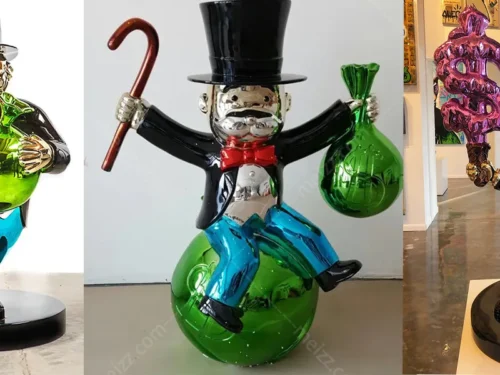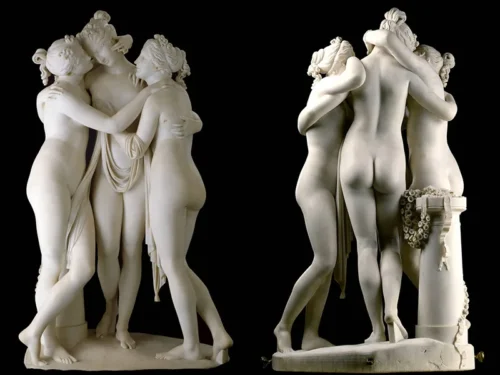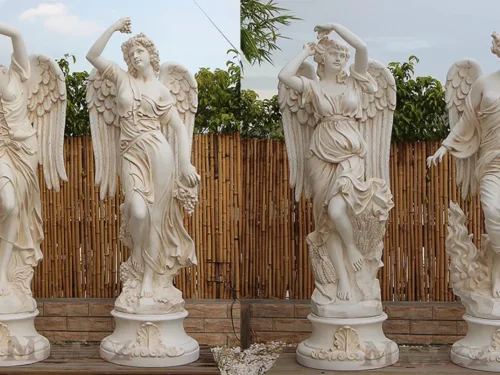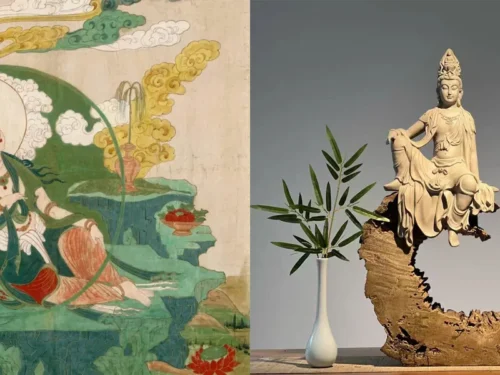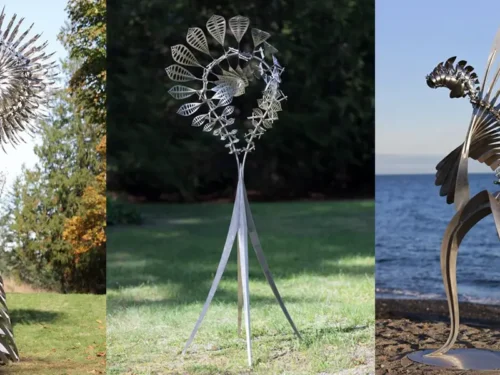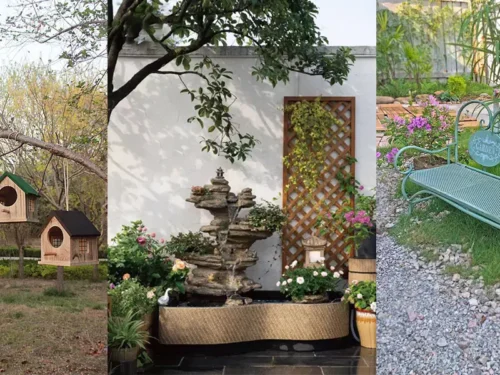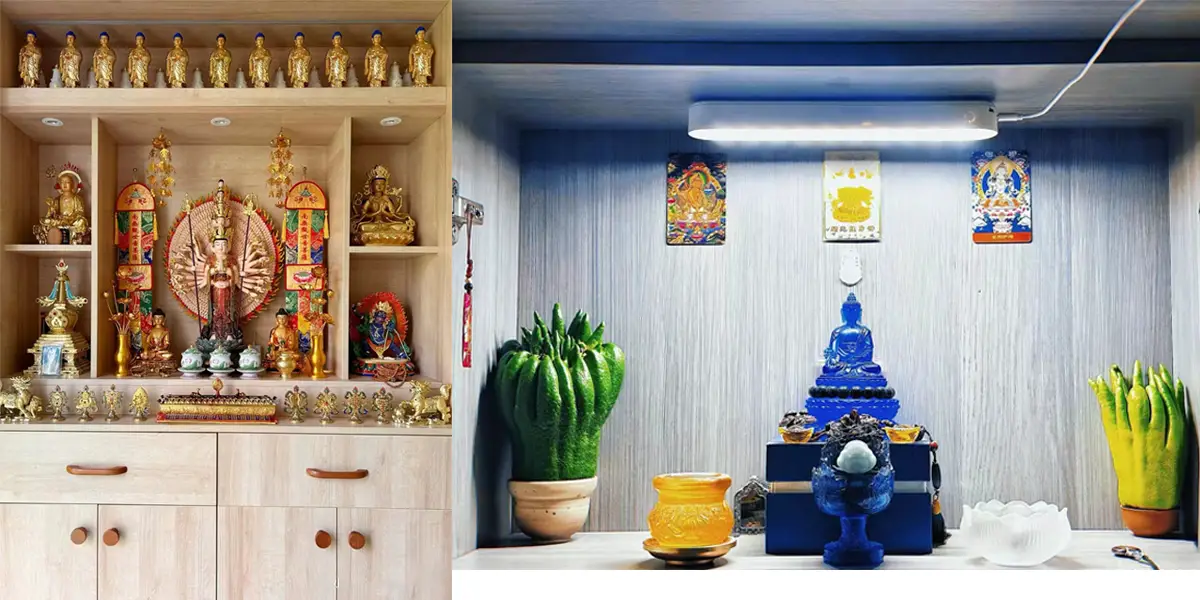
In Buddhism, offering is an act of showing respect, gratitude, and piety. Buddhists express their admiration for Buddhism (Buddhist doctrine) and Sangha (monastic community) by offering Buddha statues, pagodas, or monks. Buddha Statue Offerings is a solemn and sacred ritual that not only expresses admiration and faith in the Buddha, but also brings peace and positive energy to the family.
| Meaning of Buddha | Attracting positive energy, maintaining harmony, bringing prosperity and good luck |
| Buddha painting Vastu direction | East, North, and Northeast |
| The best position for Buddha statues | The south corner of the main entrance, living room, home office or house |
| Types of Buddha statues | Sitting Buddha, Sleeping Buddha, Nirvana Buddha, Ksitigarbha Bodhisattva Seal Buddha, Blessing/Guardian Buddha, Prayer Buddha, Meditation Buddha, Teaching Buddha, Wen Dao Seal Buddha, Little Buddha, Guanyin Statue |
| Buddha statue material | Wood, crystal, clay or metal (brass or bronze) |
| Buddha statue color | Gold and yellow, black Buddha statue, red Buddha statue, green Buddha statue, or white or silver Buddha statue |

1. Choose the appropriate Buddha statue
Material and posture:
Choose a Buddha statue that is suitable in material and posture, such as wood carving, stone carving, or bronze, sitting, standing, or lying. The choice of material and posture can be determined based on personal beliefs, home style, and space size.
Cleanliness of Buddha statues:
Before offering the Buddha statue, ensure that it is clean and tidy. You can gently wipe with a clean soft cloth to avoid using chemical cleaning agents.

Determine the offering location
Offering location:
Buddha statues should be enshrined in a quiet and solemn place in the home, such as a living room, study, or dedicated Buddhist hall. Avoid placing Buddha statues in noisy or unclean places, such as the kitchen, bathroom, or bedside of the bedroom.
Height and orientation:
The Buddha statue should be placed above the line of sight to show respect for the Buddha. The orientation of the Buddha statue should face the main indoor activity area or natural light sources, such as windows or balconies.
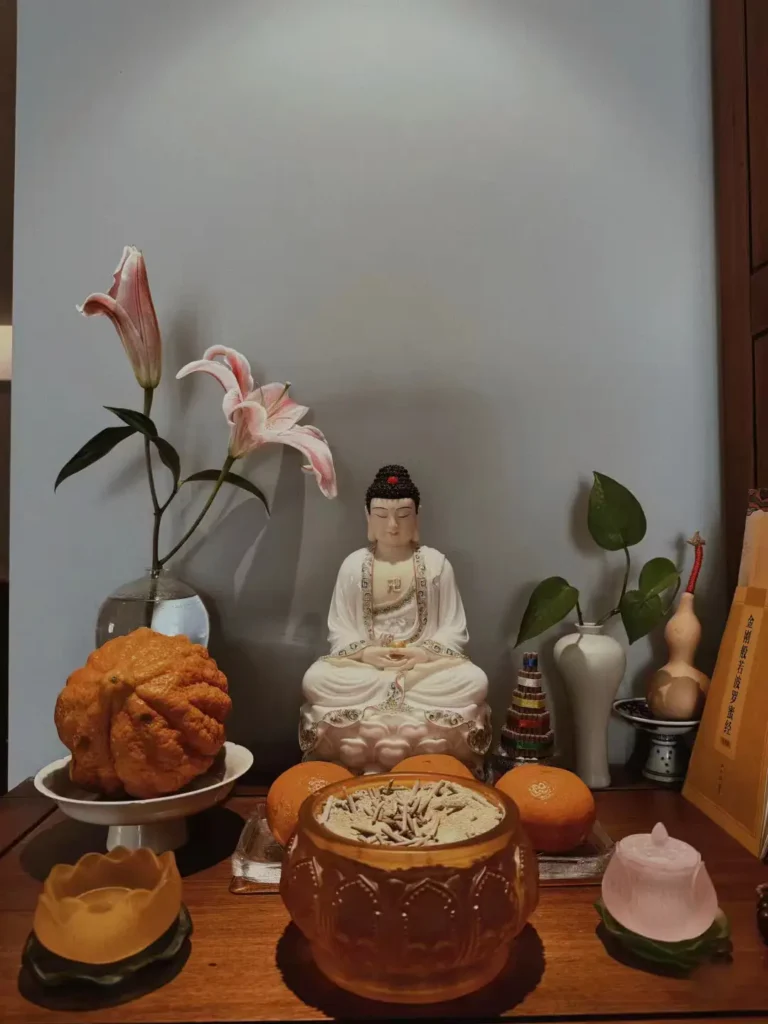
3. Preparation of tables and offerings
Offering table:
Prepare a clean and stable altar with a moderate height for easy worship and cleaning.
Supplies:
Common offerings include incense burners, candlesticks, vases, and offering plates. Supplies should be kept clean and tidy, and good quality and simple and dignified designs should be selected.
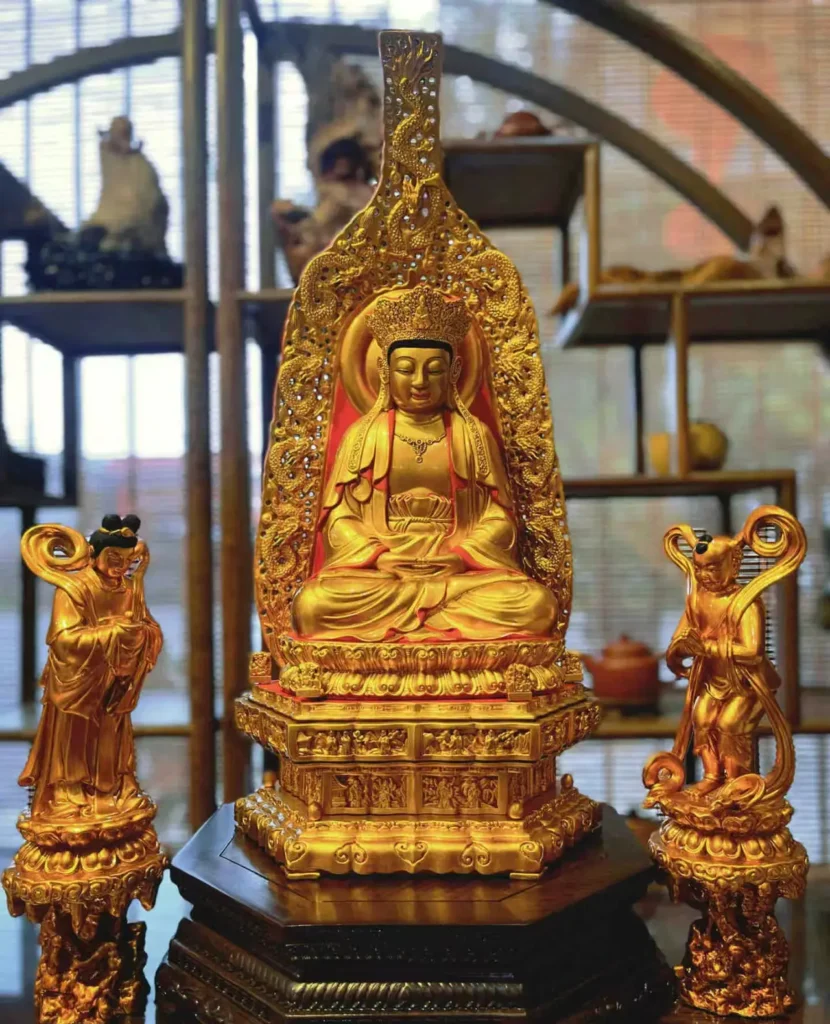
4. Selection of offerings
Fragrance:
Burning incense is an important part of worshipping Buddha statues. Choose high-quality incense, light it and gently insert it into the incense burner. Usually, three incense sticks are enshrined to show respect for the three treasures of Buddha, Dharma, and Monk.
Candles:
When offering Buddha statues, two candles can be lit to symbolize light and wisdom. Candles should be placed on candlesticks to avoid fire hazards.
Flowers:
Offering flowers shows respect and gratitude to the Buddha. Choose fresh flowers, insert them in a vase, and place them in front of the Buddha statue.
Fruit supply:
Offering fresh fruits such as apples, bananas, oranges, etc. Fruits should be cleaned thoroughly and neatly placed in the supply tray.
Clear water:
Offering a cup of clean water to signify purity and purity. The water cup should be clean and transparent, and clean water should be replaced every day.
5. Steps for Offering
Cleaning and organizing:
Before offering, clean the altar and Buddha statue, and organize the offerings and offerings. Ensure a clean and dignified environment.
Light incense and candles:
Light incense and candles, insert incense burner and candle holder. You can clasp your palms and pray, silently recite scriptures or Buddhist names.
Placing offerings:
Place flowers, fruits, and water on the altar in order to maintain the neatness and beauty of the offerings.
Prayer and meditation:
Kneel or clasp your palms in prayer in front of the Buddha statue, silently recite scriptures or Buddha names, and engage in brief meditation. We can express gratitude, pray for peace, and wisdom to the Buddha.
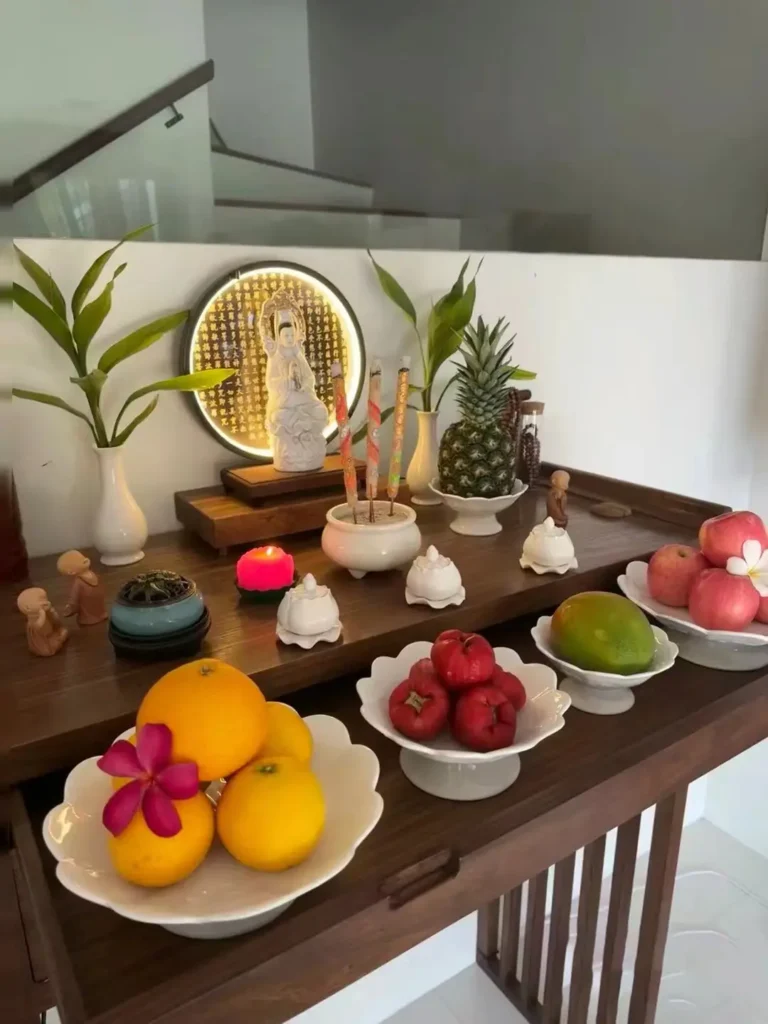
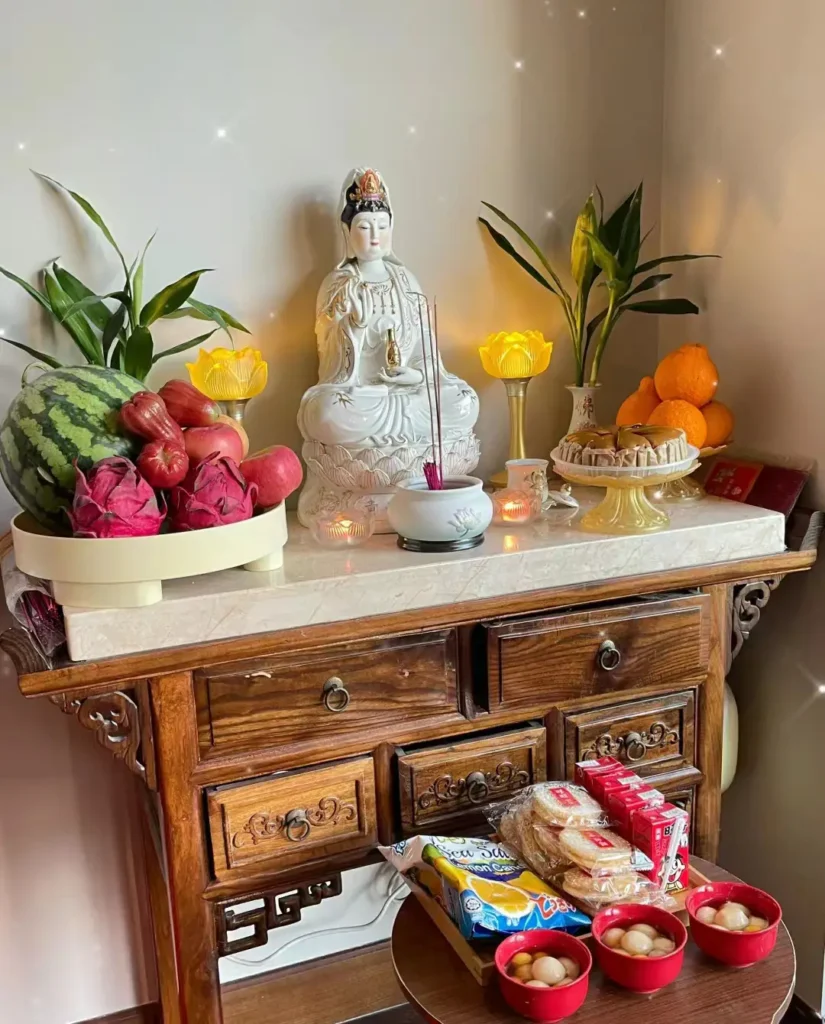
6. Daily maintenance
Regular cleaning:
Keep the altar, Buddha statue, and offerings clean and clean them daily or regularly. Especially the residue of incense ash and candles should be cleaned up in a timely manner.
Replacing supplies:
Regularly replace flowers, fruits, and water to keep the offerings fresh and tidy. Avoid spoilage or deterioration of the offerings.
Devout Heart:
The most important thing is to maintain a devout heart, whether in offering Buddha statues or in daily life, one should have respect, follow the teachings of the Buddha, and do good deeds and accumulate virtue.
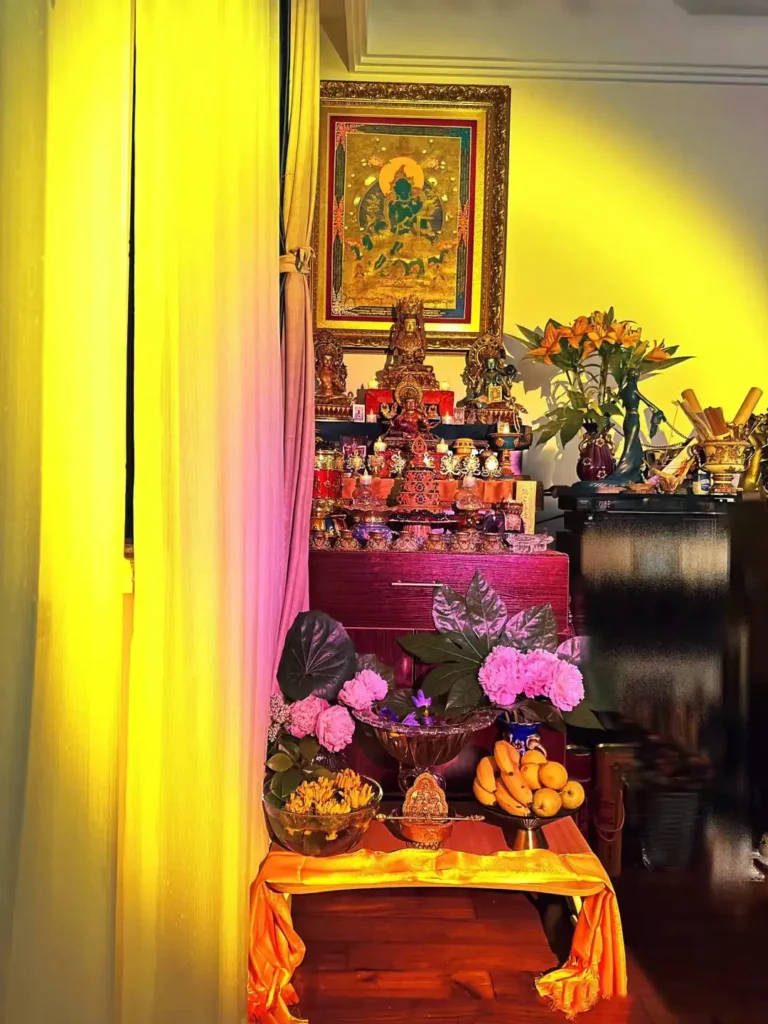
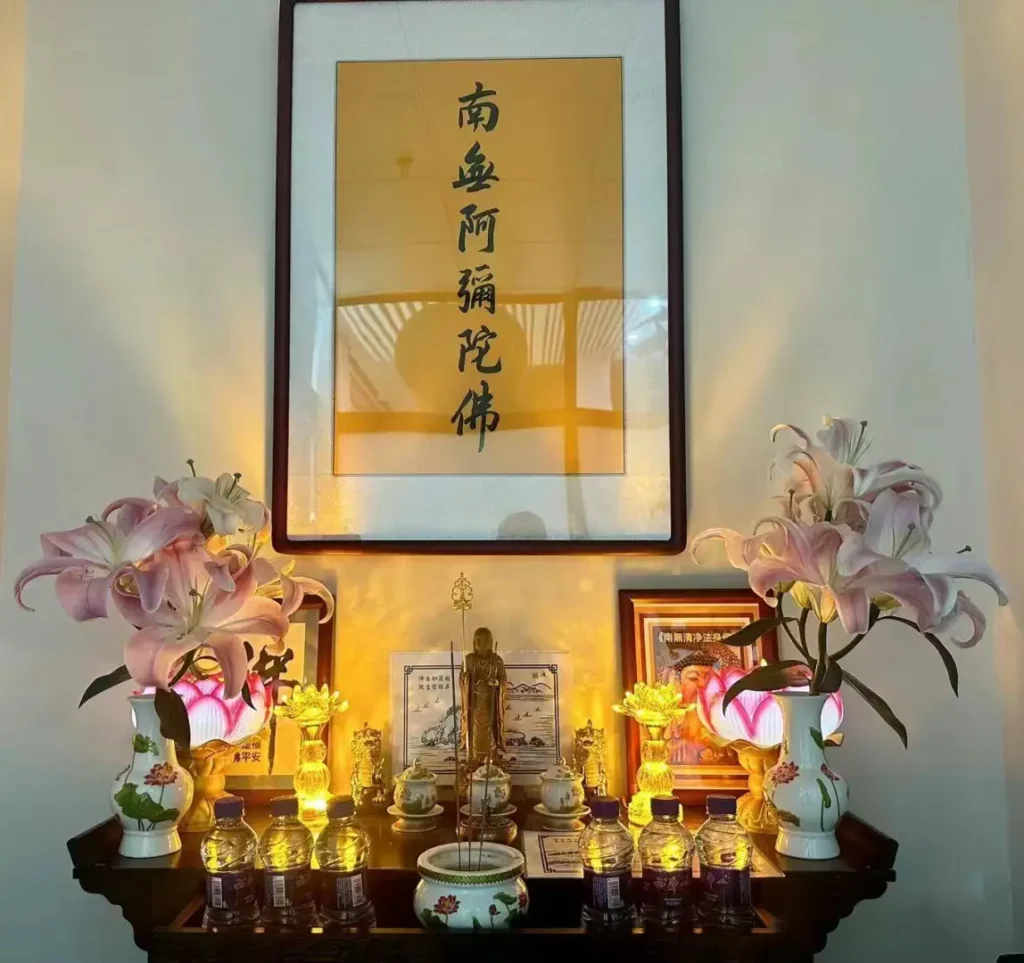
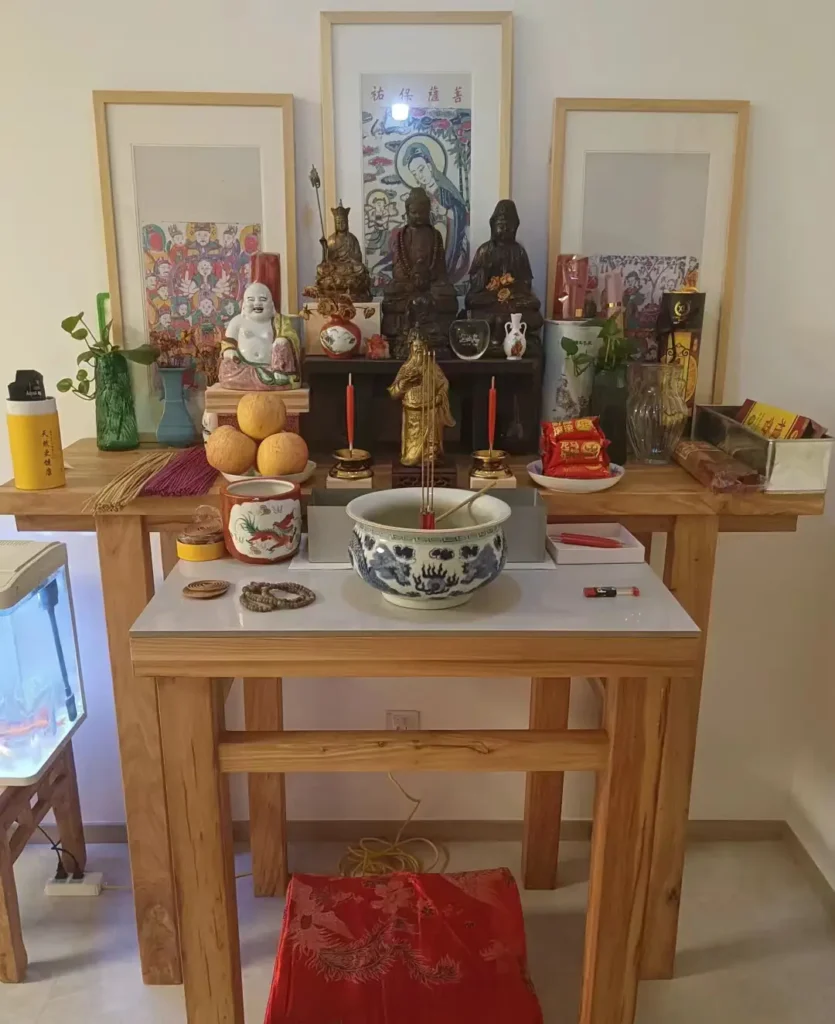
Epilogue
Buddha Statue Offerings is not only a religious ritual, but also a spiritual practice. By worshipping Buddha statues, one can purify the soul, elevate spiritual realm, and create a family environment full of positive energy and a peaceful atmosphere. I hope the above suggestions can help you better worship Buddha statues and feel the wisdom and compassion of Buddha.



